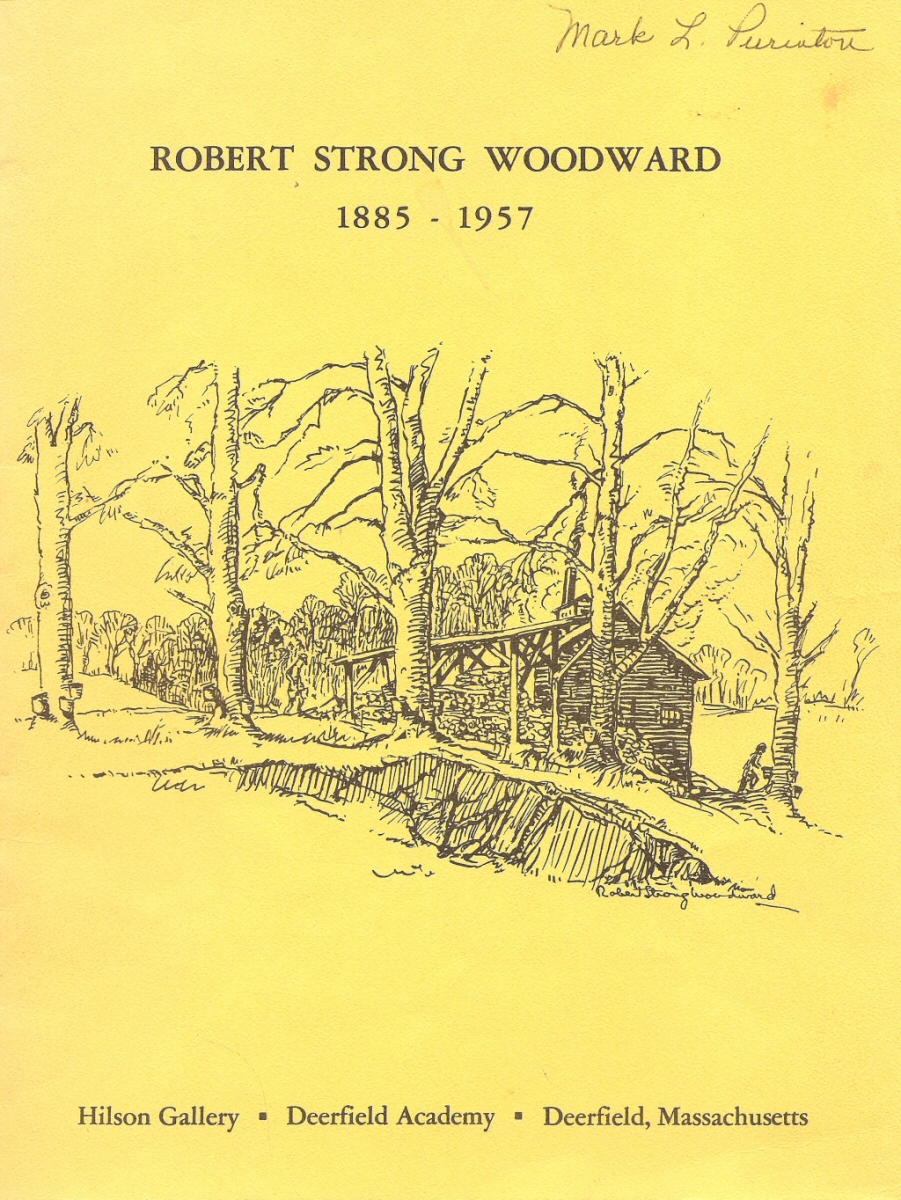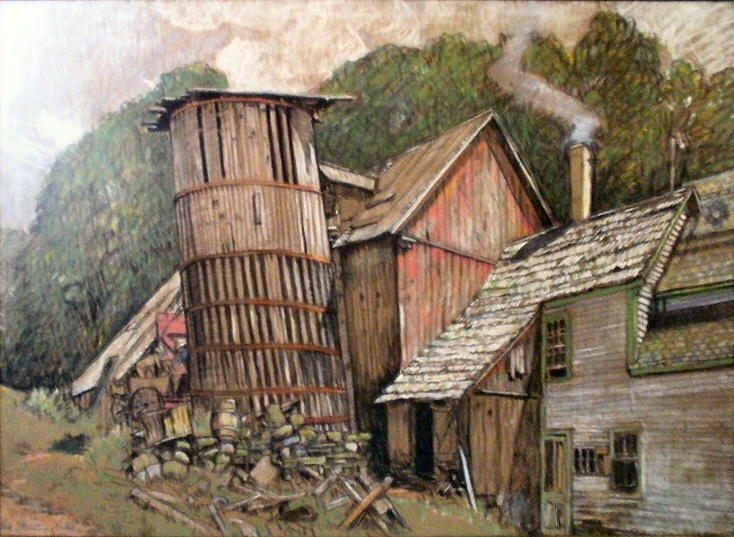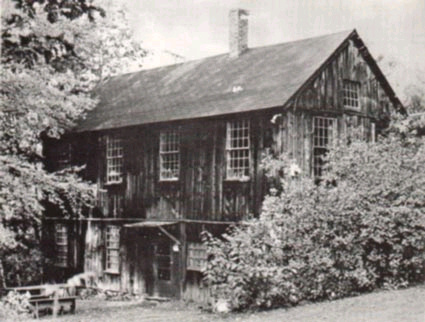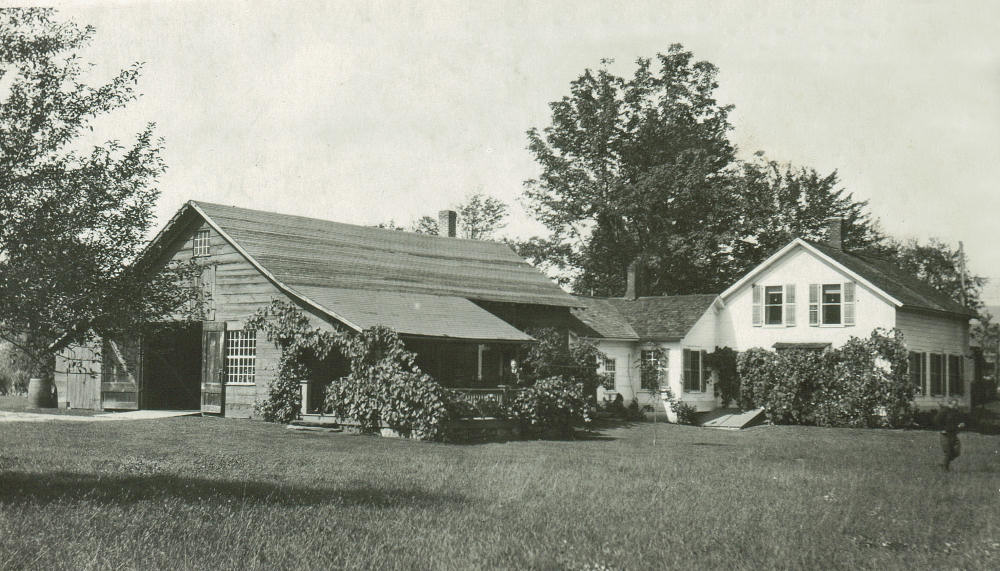Mrs. H.R. (Helen) Patch Letters
INTRODUCTION
In the school year of 1969-70, the Deerfield Academy's American Studies Group chose Woodward as its project.
The purpose of the group's project was to compile a complete catalogue of Woodward's work. The group, led by senior Garrett Hack, began a letter-writing campaign to museums, galleries
and libraries across the country. Using Woodward's cousin, Florence Haeberle, his close friend F. Earl
Williams and long time employee and beneficiary Dr. Mark Purinton as primary resources, the group began collecting names of local people
believed to be in possession of paintings and drawings for a year-end exhibition held at Deerfield's Hilson Gallery as well as for catalogue purposes. In letters to prospective owners, Hack
and faculty advisor Robert Merriman, asked for (1) confirmation of ownership, (2) any and all information related to the work, (3) to share the names of any other owners they knew of and
(4) to provide any remembrance or recollection of Woodward himself. Of all the people who responded to the letter campaign, most deferred any recollections of Woodward to the
aforementioned three of Haeberle, Williams and Purinton, with a couple of exceptions. Helen Patch is one of those exceptions and what she shares with the ASG demonstrates a close and
personal if not an astute knowledge of him going back as early as 1922. She doesn't share much, but what she shares is pure gold.
BCM
Believed to be the first letter, sometime in Dec. of 1969

"...During our many years in Northhampton Professor Patch and I counted our friendship with Rob as an intimate and cherished one. We had many a gay exchange of visits which also included
serious discussions about the nature of art:- not only its techniques but the delicate balance between a painters own subjectivity and his praise-of-God through interpreting Nature. Though I
don't recall that Rob ever painted a portrait, many of his pictures reflected some implication about human beings - which could be a flickering humor and which also suggested tragedy or
weakness, at the same time. An abandoned farm, a broken tree, a leaky roof. We use to think of ourselves occasionally that his overstatement and even his precision in details could've
been a psychologically computation for his own tragic impair-
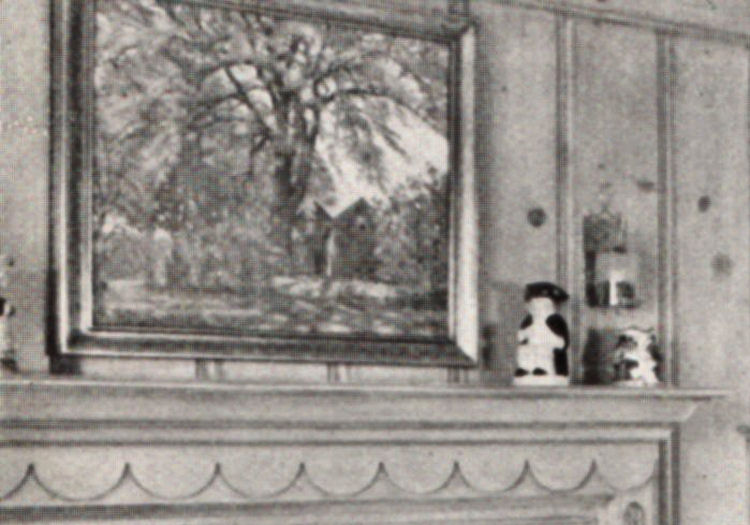
 Mrs. Patch is referencing
Dooryard Elm
Mrs. Patch is referencing
Dooryard Elm
which hung in the Burns' living room seen here.
Well anyway, my painting is a
November picture which R.S.W. called American Heritage. It has a companion piece: - the same house and elm tree up in Heath, but painted in June, from a different angle; this one is lush,
luxuriant green of early summer; it was purchased by George Burns and "Gracie Allen" (radio + films); Mr. Burns is still alive - somewhere in Southern California I suppose..."
COMMENTARY
Upon reading this first letter, which is only an excerpt (because she named a lot of names of other owners she knew of, and we are respecting their privacy; it is abundantly clear she knows
RSW pretty well. What surprises us here at the website is that in 2018, we are just learning of her. We knew nothing about Helen prior to reading her letters found in the American Studies
Group archive in the Deerfield Academy's Boydon Library. We also learn that she owns a painting, American Heritage that
inexplicably did NOT make the group's "Checklist of Known Works." Her insights to Woodward's work are very profound and could only be formed with an intimate knowledge of him. Because
RSW often did not travel to exhibitions or meet with critics or reporters, most criticisms made were strictly from an academic point of view of his work and very few ever quite captured the
grasp of Woodward's larger perspective. We must note that she incorrectly cited the house of her painting being in Heath. It is the
Halifax House RSW frequently painted just across the border from Heath in West Halifax, Vermont.
BCM
2nd Letter dated Jan. 28, 1970

"I've no specific memory of what I wrote about R.S.W. as a person. I always felt that his own tragic limitation prevented not only extensive travel, but ruled out any influence of Cubism,
Impressionism and other revolutions in the art of 50 years ago. He was "Mr. New England"---accept there was no trace of the ocean's surf or the rocky coast.
Perhaps I also said
that his pictures were also highly representational but (with some training in psychiatry) I attribute this to an extension of himself. Within a range of very few miles of his charming (blacksmith's
shop) studio, he painted "pretty," or some wide folding of distant hills_ all with loving precision-- just as he dressed and arranged his personal possessions. He was something of a "Beau Brummell"
and even with old familiar friends like the H.R. Patches he was uncomfortable to have us drop in, finding him into messy smock, with 30 brushes and un-scraped pallet lying around! Not only did
he dress, with matching tie, socks and handkerchief, but the studio was comely__"dressed up" though never fussy!
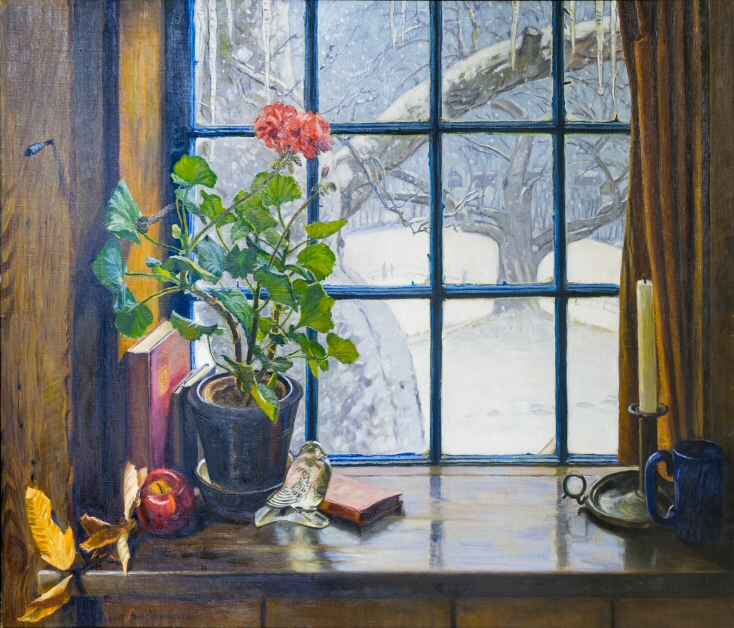
 Winter Orchard: RSW's small, east facing studio
Winter Orchard: RSW's small, east facing studio
window containing an apple, a branch of beech leaves
and a candle in its holder, sans the drippings.
I recall specially a late November day when there was a
yellow-orche arrangement:- of vase with those sprigs of witch hazel:- tiny, curling yellow blossoms which come out when most of the yellow leaves have fallen. There were always these lovely,
strong symbols which balanced his paraplegic-body: a ball of shining apples, arranged just so, with a charming half burned candle beside them: a lovely shape of drippy, drizzled-down wax.
Whatever you write about him don't forget his extraordinary and ironic humor. He used to paint up at Heath:- there was of run-down "shiftless" family named Keach, I think; Rob painted their
kitchen-stoop:- an incredible mess of mops, pails, broken steps-- weathered and unpainted. The picture was uproariously funny in our sense but revealed also the tragedy of broken, unfulfilled,
and hopeless lives.
- - - - - - - - -
As you can see, it has given me great pleasure to write about Rob as a person as well as an artist..."
COMMENTARY
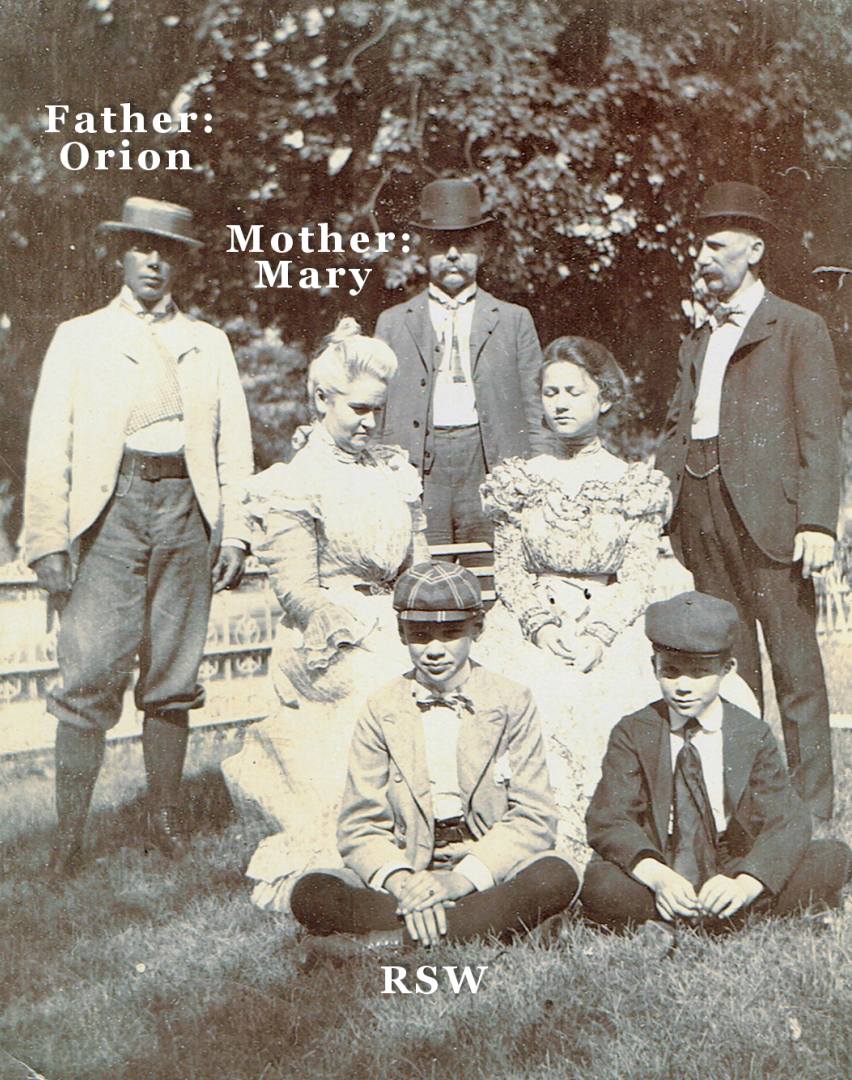
 Woodward with his parents and
Woodward with his parents and
others we haven't identified in Lima, OH.
The year is also unknown. NOTE the
Woodward men's attire.
In her second letter, Mrs. Patch reveals much more about RSW, particularly his particularities. She shares with us that like the precision in which he lays out the hills in his paintings reflects
an aspect of his personality. She calls him, "something of a Beau Brummell," Brummell was an iconic figure in Regency England and for many years the arbiter of men's fashion, "the
preeminent example of the dandy... His name is still associated with style and good looks." (1) It is no revelation that RSW was a bit sensitive to how he appeared. He was known to be very
fastidious about how he appeared in public. He did not like his picture taken, especially showing his chair. For newspapers, he made it a point to appear "able-bodied" by being framed just so,
sitting straight, perhaps next to one or two of his paintings. This is no doubt a result of his condition. However, in examining photos of his father; one can see a bit of "Beau" himself. In fact,
many of RSW's childhood pictures show him and his father being quite dapper suggesting this characteristic prevailed prior to his accident.
Helen's description of his
"arrangements" are simply wonderful. Reminiscent of his Window Paintings she suggests that the symbolism reflects a balance to his condition. However, I would offer this instead; maybe
the strong symbols he surrounded himself with were representative of his inner spirit and strength which in turn provided balance to his outer circumstances. In either case, his meticulous
approach to everything, and the diligent attention to detail are often noted by close friends and critics alike. Definitely a character trait that permeated his work on many levels.
Furthermore, noted in Helen's letter and is frequently mentioned by many who knew him is Woodward's "ironic humor." She uses an example of his paintings of the Keach residence (see:
A Country Interior, Country Sitting Room,
Keach's Stove, and Mrs. Keach's Front Porch) The painting she talks
of is not known to us; however, she describes it well enough for us to get its gist. As wonderful as I find Helen's insights, this is the one which I feel is way off the mark. Of course, she and her
husband would find such a painting a bit ridiculous. After all, nothing about it sounds attractive or appealing, but I'll bet you dollars to donuts RSW did not paint it in humor but rather with great
seriousness, affection and attention. Helen did get one thing right, it reveals a tragedy which to some who have not experienced an adverse condition beyond their reach could perceive this as
comical, even absurd to paint. RSW related to the Keach's in a way that could best be described as compassion, while he thought many things funny, he did not see the Keach's as shiftless
(characterized by laziness, indolence and lack of ambition) but rather quite the opposite - he saw in them as possessing great resolve, resilience, and perseverance.
BCM
3nd Letter dated May 4, 1970
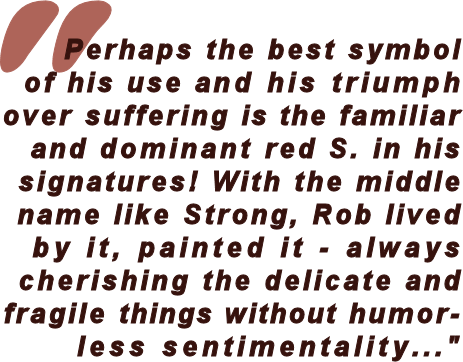
"Dear Mr. Hack,
You are so very kind to send me the two catalogs. The second one I sent to my son, Robert, an attorney in Sacramento. More than a quarter of a century ago he
spent his honeymoon at the little mill studio. (Having provided brides silver, etc.. HR? And I greatly regretted we couldn't afford to buy the young people Early Moonlight, which Rob
completed about that time.)
The catalogue enriches my own memories:- the inception and completion of most of the paintings; our shared laughter over the farmer who repainted
his weathered barn; perhaps most of all a buffet supper at the Hiram Woodward studio where our continuing friendship with Buelah Bondi began.
Indulge me in one criticism of
the J.C. Edwards biography. Toward the end he writes: "He never permitted his troubles to show in his work." This seems to me a shallow comment, inperceptive. Along with varied skills and
insights, R.S.W. might never have achieved his unique quality as a painter had he not translated his own suffering into broken branches, rickety barns, The Slanting Silo, The Broken Wall, and
the chill of winter or the joy of
lilacs against a sagging house. (I think the psychiatrist call this mechanism "displacement"!) In my care many of the paintings would've remained just pretty had
it not been for this gallant use of suffering; at most they'd have remained quaint. Of course his rich and subtle humor was probably the most remarkable result of R's experience of pain. Perhaps
the best symbol of his use and his triumph over suffering is the familiar and dominant red S. in his signatures! With the middle name like Strong, Rob lived by it, painted it-always cherishing the
delicate and fragile things without humorless sentimentality.
Please do not feel you must acknowledge this letter. It's purpose is also my congratulations to you and to your
associates for a fine program. I only regret that my slow recovery from several months of ill health prevented my coming to Deerfield.
Yours cordially,
Helen K. Patch"
COMMENTARY
701.png)
The only image we have of Early Moonlight
Mrs. Hatch was more than twenty years younger than her husband. I learned this when she mentioned wanting to buy "Early Moonlight" (painted in 1921) as a wedding gift to her son did not
make sense. "How OLD is this woman?" I asked myself. After some simple research on Ancestry.com, I confirmed that in a 1920 census report, her husband's age is listed as 46, hers 26 and
there was no mention of a son (born 1923). She was 76 at the time she wrote these letters. However, she also confirms a truth we already know... From 1938 to 1945, RSW "repainted" a number
of mostly early Redgate paintings he had sitting in his studio for over twenty years. For whatever reason, he was not satisfied with their outcome and held on to the canvases in the hope, he would
take another crack at them. So her reference to a painting, painted early in his career, and the first Woodward painting bought by a collector, G.W.V. Smith,
for his collection of the Springfield Museum of Art suggest that he may have painted another version of Early Moonlight and then "re-painted" that around 1946 (the year of Hatch's son's wedding).
Then again, this could be completely wrong! When it came to RSW naming paintings in relation to others, there appears to be no rhyme or reason. (See
Tale of Two Winters for MORE) Could she be referring to the Unnamed: A
Winter's Mist "re-painted" during that period or even, Evening Mists or
Tranquil Hour? It is unclear; however, both Evening Mists and Tranquil Hour have the atmospheric pinks, oranges and yellows of the sun, not moonlight. The
Unnamed: A Winter's Mist is a moonlit painting, but it is hard to say if it is "early" moonlight. Moreover, Early Moonlight was a large 40 x 50" painting when he was still painting them. As his
career proceeded, he rarely painted such large canvases settling on 36 x 42" for his larger paintings. None the less, we are pleased to at least have an idea of what we are looking for as well as the
confirmation that there may be another 1940s re-painted "Redgate" painting.
It is wonderful to learn that her son stayed at the Little Shop for his honeymoon. We know from Woodward's beneficiary Dr. Mark Purinton that the Little Shop was rarely used but well cared for. We also know it contained a four post bed, however; Doc never recalled anyone ever sleeping in it. I often wondered if RSW, at times, used the Shop for visiting friends and guest and this is confirmation that indeed, under certain circumstances, guest did stay at he Little Shop.
Helen again reminisces after publication of the catalogue telling us it "enriches her memories" to review it. She offers us the laughs she, and Woodward shared over the farmer who repainted his barn after RSW asked if he could paint it but then she drops a bombshell - an origin story involving Buelah Bondi! For years, we have wondered and speculated just exactly how RSW and Bondi came to know each other... as recently as February 2018, we learned that Bondi grew up in or around the Chicago area; her father was in real estate, as was Woodward's; but most compelling was that she attended an all-girls school about an hour north of Peoria where RSW was attending Bradley Polytechnic and though three years his junior, it is not inconceivable to believe their paths could have crossed. RSW is a popular guy at Bradley; he's lived all over the country and kept up correspondence with friends from many of the places he lived. His close friend Ethel Dow met RSW briefly in Peoria through her Smith College roommate and it was not until 15 years later when she ended up in Buckland that they reunited and started a lasting friendship. Could Bondi have a similar story? A friend-of-a-friend put them in touch?
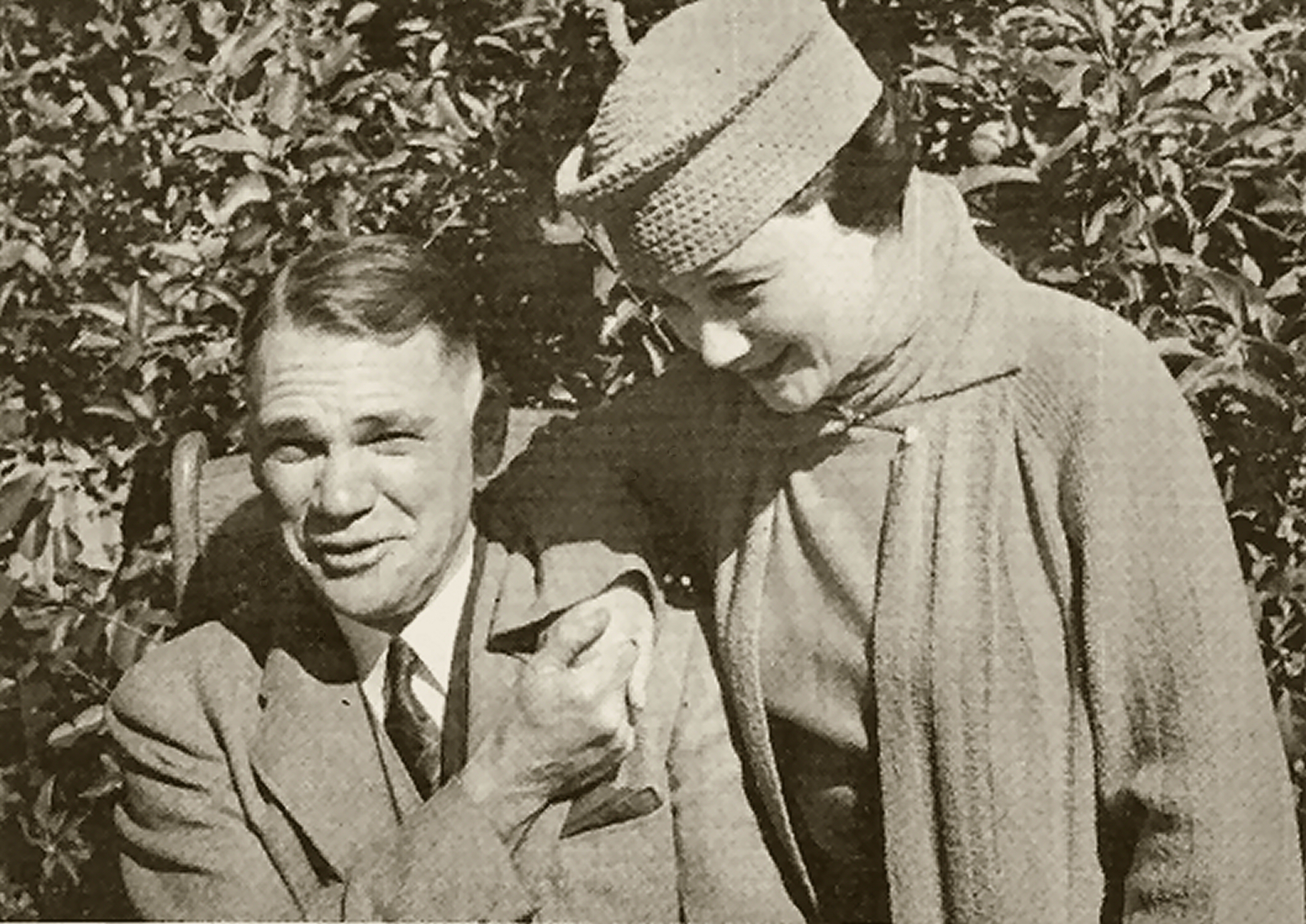
RSW with Beulah Bondi date, location unknown
We still do not know what brought Bondi to that buffet dinner at Hiram. What we do know is that RSW loved to entertain friends and guest. He was well known for his picnics and record-player concerts, but this
is the first we have ever heard any reference to buffet dinners. He often hosted friends for weekend visits. The Lunts visited and stayed most every weekend for years. We also know that Hiram was admired by
travelers to the area. It's been reported that people would take the long way to their destination just to detour by the farm and studio to gawk at its splendor. Was Bondi one of those travelers? We know she
was appearing on Broadway during the years RSW lived in Hiram... did she know someone who knew him or was he in NYC for an event, and they crossed paths and learned they shared common interest? We
may never know, however, we can stop wondering about its first day; Helen was in attendance.
BCM


